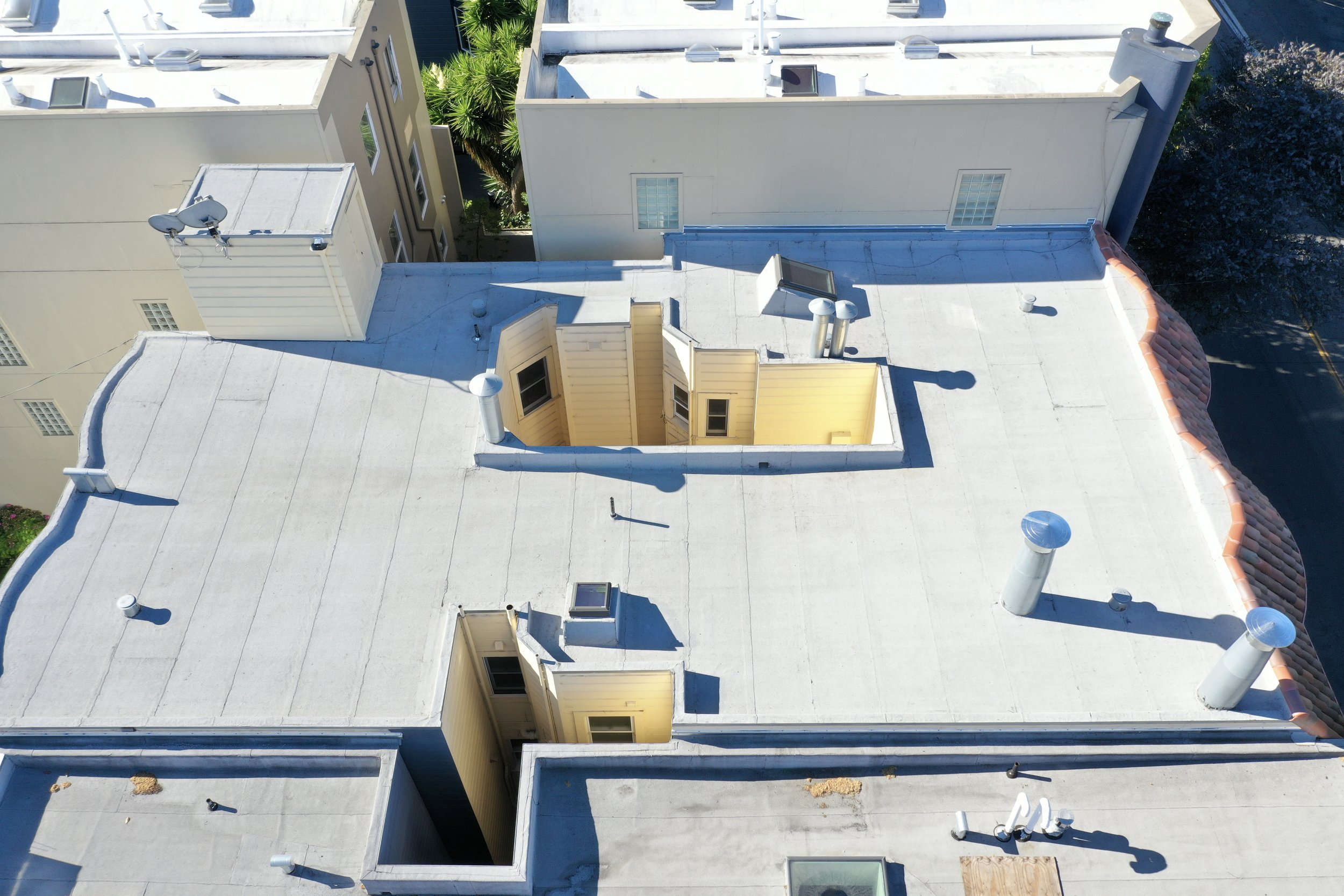
Thermoplastic Membranes
A thermoplastic membrane, often referred to as "thermoplastic roofing," is a synthetic material that softens when heated and solidifies when cooled. This unique property allows it to form a tight seal, making it ideal for single-ply roofing installations without the need for additional layers. These membranes offer versatility and can be applied using various methods, including mechanical attachment, adhered installation, and point-affixed installation.
There are primarily two types of thermoplastics used in roofing: polyvinyl chloride (PVC) and thermoplastic olefin (TPO). While there are other types such as PVC alloys and chlorinated polyethylene, their usage is comparatively less common. Although PVC and TPO share many characteristics, each type has its own set of advantages and disadvantages.
PVC roofing membranes have a long-standing history in the roofing industry, with origins dating back to the early 1960s in Germany. They are recognized for their energy efficiency during production compared to other materials, thanks to the addition of solid plasticizers that enhance flexibility and weather resistance. PVC membranes are inherently fire-resistant and come in various colors, offering design flexibility. They are puncture-resistant and easy to repair, ensuring longevity and serviceability.
TPO has gained popularity in roofing systems over the last 25 years and is known for its heat-weldable installation method. Available in diverse colors, including white, black, and light gray, TPO offers energy-saving benefits similar to those of white roofs. Its polymerized rubber composition provides flexibility, even in cold climates, and flame retardants ensure fire resistance. TPO membranes boast high solar reflectivity, contributing to indoor comfort and potential energy savings. They are also recyclable, making them environmentally friendly.
Installation
Thermoplastic roofing materials can be heated and cooled repeatedly without chemical crosslinking, making them mechanically attachable. Heat-welding is the most common method, as it allows the material to bond seamlessly to itself. PVC and TPO membranes come in various thicknesses, offering different levels of protection against tears, punctures, and wear. Heat-welding ensures impermeable seams, enhancing leak protection.
Drawbacks
Despite their benefits, thermoplastic roof membranes have drawbacks. Each type requires specific primers and coatings for maintenance, and mistakes during application can lead to adhesion issues. PVC membranes may become brittle over time due to leaching plasticizers, while TPO's durability under extreme heat conditions may vary depending on the formulation.
In conclusion, while thermoplastic roof membranes offer numerous advantages, proper selection and installation are crucial to avoid potential drawbacks. Regular inspections and maintenance ensure the longevity and performance of these roofing systems, regardless of the material used.
